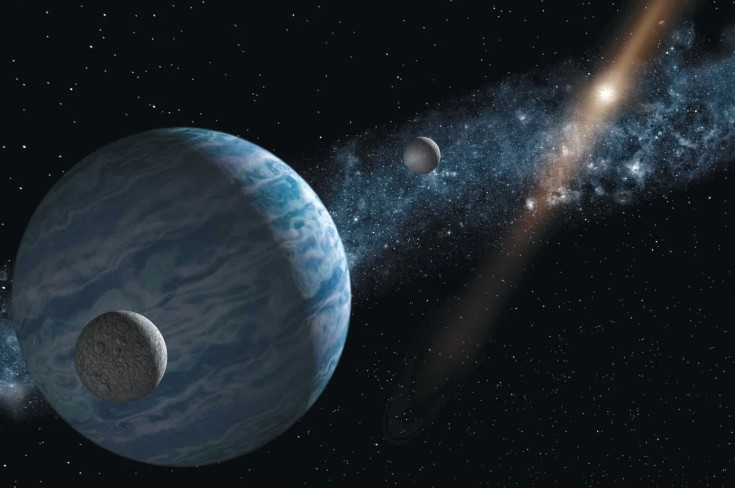Ammonite Discovery at Solar System’s Edge Challenges Planet Nine Theory
In a stunning twist to the ongoing cosmic detective story, astronomers have uncovered a strange, distant object on the outskirts of our solar system. Nicknamed “Ammonite,” the newfound body—officially known as 2023 KQ14—could rewrite everything we thought we knew about the elusive Planet Nine.
“It is possible that a planet once existed in the solar system but was later ejected, causing the unusual orbits we see today.”
That’s the claim from researchers at the National Astronomical Observatory of Japan, who led the discovery. Ammonite’s orbit doesn’t just look odd—it’s unlike anything seen before.
It suggests a major shake-up occurred in the solar system’s early years. And perhaps, if Planet Nine ever existed at all, it might now be long gone.
What Is Ammonite?
Ammonite is a sednoid, a rare breed of trans-Neptunian object that lives far beyond Neptune. This class of objects has strange, stretched-out orbits and never comes anywhere close to the inner planets. In fact, the closest Ammonite gets to the Sun is 71 times the distance between Earth and the Sun.
Let that sink in. The body itself could be up to 236 miles wide, roughly 45 times taller than Mount Everest. It’s only the fourth sednoid ever found, and it’s got scientists scratching their heads.
The discovery was part of the FOSSIL survey, short for Formation of the Outer Solar System: An Icy Legacy, using the Subaru Telescope in Hawaii. Initial sightings happened in 2023, followed by confirmations using other powerful observatories, including the Canada-France-Hawaii Telescope.
But this isn’t just a new rock on the block. It may be a literal fossil of the early solar system.
According to simulations run on high-performance computers in Japan, Ammonite’s orbit has remained unchanged for 4.5 billion years. That’s practically since the solar system was born.
“2023 KQ14 was found in a region far away where Neptune’s gravity has little influence,” explained planetary scientist Fumi Yoshida. “The presence of objects with elongated orbits and large perihelion distances in this area implies that something extraordinary occurred during the ancient era when 2023 KQ14 formed.”
Planet Nine Takes a Hit
For years, astronomers have hunted for a hidden giant, Planet Nine, that might be lurking beyond Pluto. The theory goes that its gravity would explain the odd orbits of far-flung objects like the sednoids. But Ammonite doesn’t quite fit the pattern.
“The fact that 2023 KQ14’s current orbit does not align with those of the other three sednoids lowers the likelihood of the Planet Nine hypothesis,” said Yukun Huang, who led the study.
That’s a bold claim. One that could push the Planet Nine theory closer to extinction.
Instead, Huang and colleagues suggest an alternative: maybe a giant planet once did exist in the early solar system, but got ejected in a violent gravitational game of pinball. The legacy of its dramatic exit? Objects like Ammonite and its fellow sednoids, now drifting in the deep freeze of space.
While Ammonite may not help confirm Planet Nine, it opens new doors. Its discovery proves that the solar system’s outer edges are far more dynamic than we assumed. And telescopes like Subaru remain our best bet for uncovering more of these ancient wanderers.
“I would be happy if the FOSSIL team could make many more discoveries like this one and help draw a complete picture of the history of the solar system,” Yoshida said.
This isn’t just another space rock. It’s a message from the past, quietly orbiting in the dark, reminding us that our solar system may still have secrets buried deep beyond the known.






